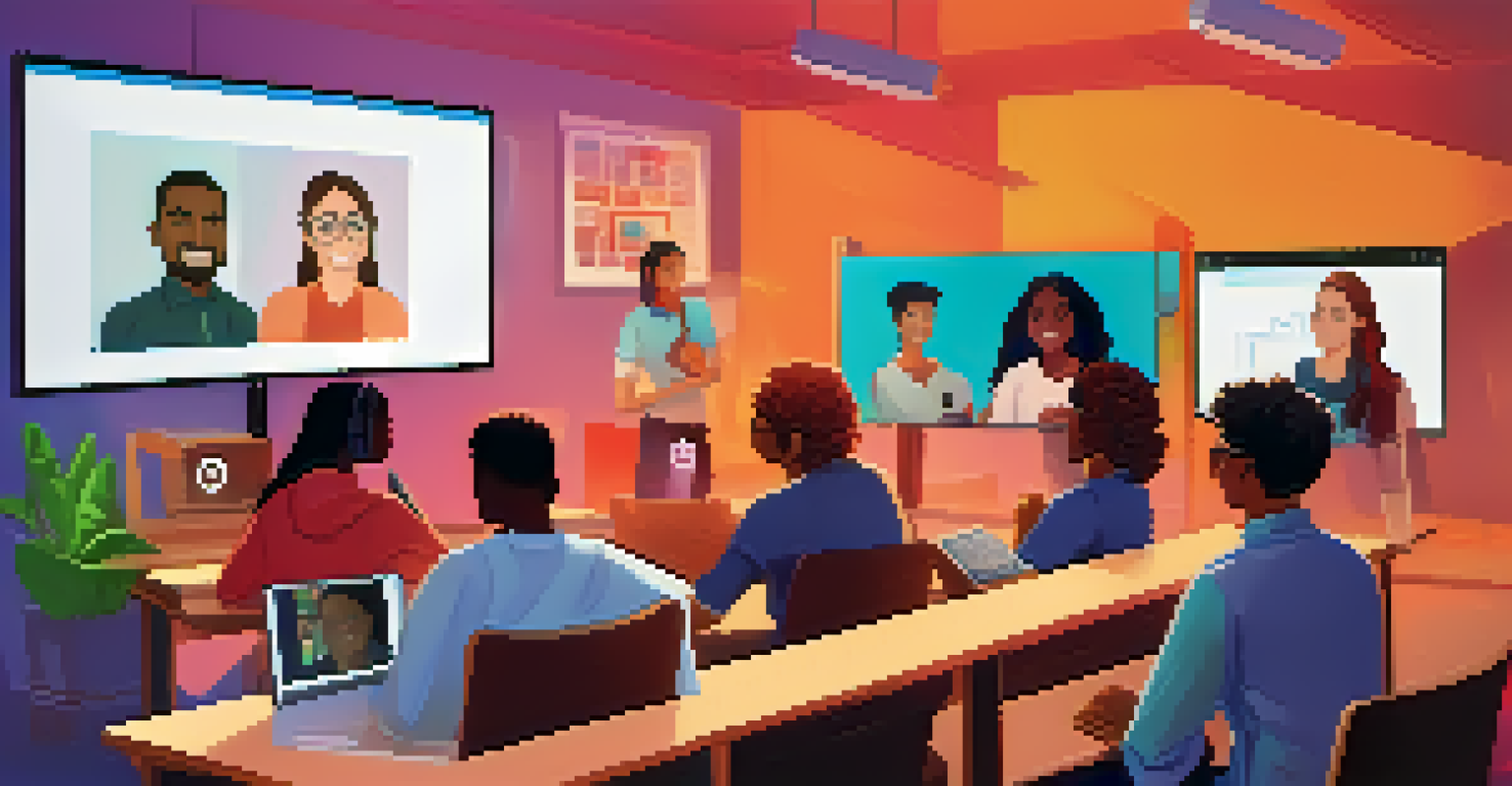Creating Online Learning Pathways for Remote Students

Understanding the Importance of Learning Pathways
Learning pathways serve as structured guides that help students navigate through their educational journey. They outline the skills and knowledge students need to acquire, making the learning process more manageable and focused. Especially for remote students, clear pathways can prevent feelings of overwhelm and confusion, allowing for a smoother learning experience.
Education is not the filling of a pail, but the lighting of a fire.
By breaking down complex subjects into smaller, digestible chunks, learning pathways empower students to progress at their own pace. This tailored approach not only supports individual learning styles but also fosters a sense of achievement as students complete each segment. Ultimately, having a well-defined learning pathway enhances motivation and retention of information.
Furthermore, these pathways can adapt to various learning preferences, ensuring inclusivity. For instance, some students might thrive with interactive content, while others may prefer reading materials or video lectures. By providing multiple options within the same pathway, educators can cater to a diverse array of needs, making remote learning more effective.
Identifying Key Learning Objectives
The first step in creating an effective online learning pathway is identifying clear learning objectives. These objectives should articulate what students are expected to know or be able to do by the end of the course or program. For instance, instead of a vague goal like 'understand math,' a specific objective could be 'solve quadratic equations.'

Clearly defined objectives serve as a compass for both educators and students. They help educators design content and assessments that align with the desired outcomes, ensuring that every component of the course contributes to the overall learning experience. This alignment not only clarifies expectations but also enhances student accountability.
Structured Learning Pathways Matter
Learning pathways provide essential guidance, helping students navigate their educational journey with clarity and focus.
Moreover, having specific objectives allows for better tracking of student progress. Educators can develop assessments and quizzes that directly measure whether students have achieved the stated goals. This feedback loop is essential for remote learners, as it provides them with insights into their strengths and areas needing improvement.
Incorporating Diverse Learning Materials
To keep remote students engaged, it's crucial to incorporate a variety of learning materials into the pathway. This can include videos, articles, podcasts, and interactive quizzes, catering to different learning styles and preferences. Just as a chef uses various ingredients to create a delicious dish, mixing content types can make learning more appealing.
Tell me and I forget. Teach me and I remember. Involve me and I learn.
For example, a course on environmental science might include documentaries, scientific articles, and virtual field trips. Such diversity not only enriches the learning experience but also helps students connect with the material in meaningful ways. It encourages active participation rather than passive consumption of information.
Additionally, utilizing multimedia resources can foster collaboration among students. Discussion forums or group projects can be enhanced with shared videos or articles, prompting discussions that deepen understanding. When students collaborate and share resources, they benefit from different perspectives and insights.
Creating a Flexible Learning Schedule
Flexibility is a cornerstone of effective online learning pathways. Remote students often juggle various responsibilities, from family commitments to part-time jobs, making rigid schedules impractical. By designing a flexible learning schedule, educators empower students to take control of their education and engage when it suits them best.
For instance, offering recorded lectures and asynchronous assignments allows students to learn at their own pace. They can revisit challenging concepts whenever they need, rather than being confined to a set timetable. This flexibility not only accommodates different lifestyles but also fosters a sense of ownership over the learning process.
Diverse Materials Engage Students
Incorporating a variety of learning materials caters to different preferences, making the educational experience more engaging and effective.
Moreover, integrating regular checkpoints or milestones within the flexible schedule can keep students on track. These checkpoints serve as gentle reminders to reflect on progress and adjust learning strategies as needed. Having this balance between freedom and structure helps maintain motivation and commitment to learning.
Utilizing Technology for Enhanced Engagement
Technology plays a vital role in the creation of online learning pathways, offering tools that enhance student engagement. Platforms like Learning Management Systems (LMS) allow educators to track progress, provide feedback, and facilitate communication. These tools streamline the learning experience, making it easier for students to access materials and connect with instructors.
Incorporating gamification elements, such as badges or leaderboards, can also boost motivation. For instance, recognizing students' achievements with virtual rewards can encourage them to stay committed to their learning goals. Just as games keep players engaged with challenges and rewards, these elements can make learning more fun and interactive.
Additionally, utilizing collaborative tools like discussion boards and group projects fosters a sense of community among remote learners. Students can share insights and support one another, combating the isolation that often accompanies online learning. Engaging with peers not only enriches their understanding but also builds valuable social skills.
Assessing Student Progress Effectively
Regular assessment is a crucial part of any learning pathway, helping both students and educators gauge understanding. For remote students, assessments can take various forms, including quizzes, essays, and presentations. By incorporating diverse assessment methods, educators can cater to different strengths and provide a comprehensive view of student progress.
Formative assessments, such as periodic quizzes or reflection journals, allow students to check their understanding before moving on to new content. This encourages a growth mindset, where mistakes are viewed as opportunities for learning rather than failures. Such an approach not only boosts confidence but also deepens comprehension.
Flexibility Enhances Learning Success
Creating a flexible learning schedule empowers students to manage their education alongside personal responsibilities, fostering ownership and motivation.
Summative assessments, on the other hand, provide a snapshot of what students have learned at the end of a module or course. These can be more traditional exams or project-based assessments that require critical thinking. By combining both formative and summative assessments, educators can create a well-rounded evaluation strategy that supports student success.
Fostering a Supportive Learning Community
Creating a supportive learning community is essential for remote students who may feel isolated. This community can be cultivated through forums, discussion groups, and peer mentorship programs. A sense of belonging can significantly enhance motivation and commitment to learning, making students feel that they are part of something larger.
Encouraging open communication is vital in building this community. Educators should establish regular check-ins, whether through live Q&A sessions or feedback surveys, to ensure students feel heard and supported. When students know they can reach out for help, it fosters a positive learning environment where they can thrive.

Collaboration among students can also enhance learning experiences. Group projects or study sessions encourage the sharing of ideas and perspectives, enriching the educational process. These interactions not only deepen understanding but also build friendships and networks that can last beyond the course.